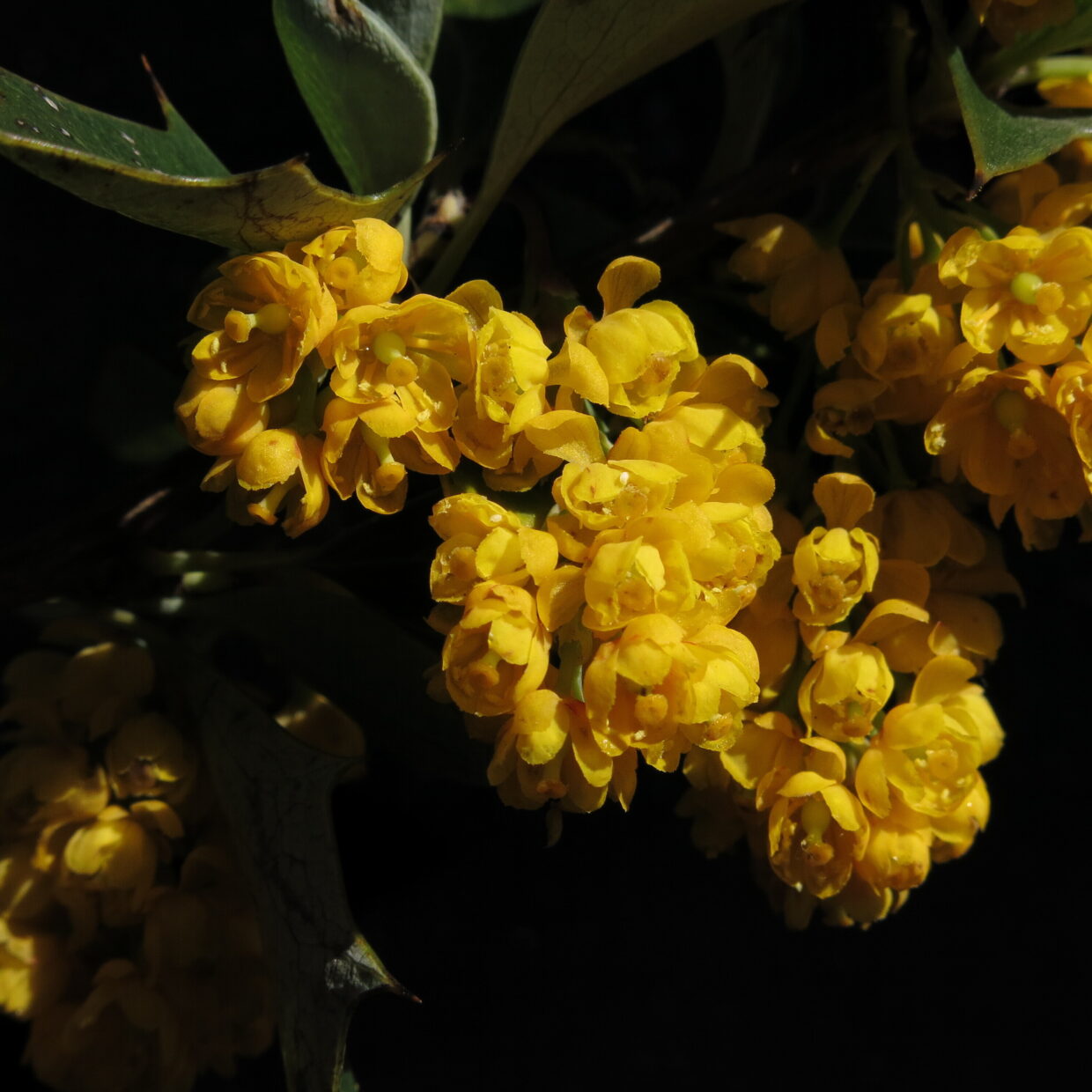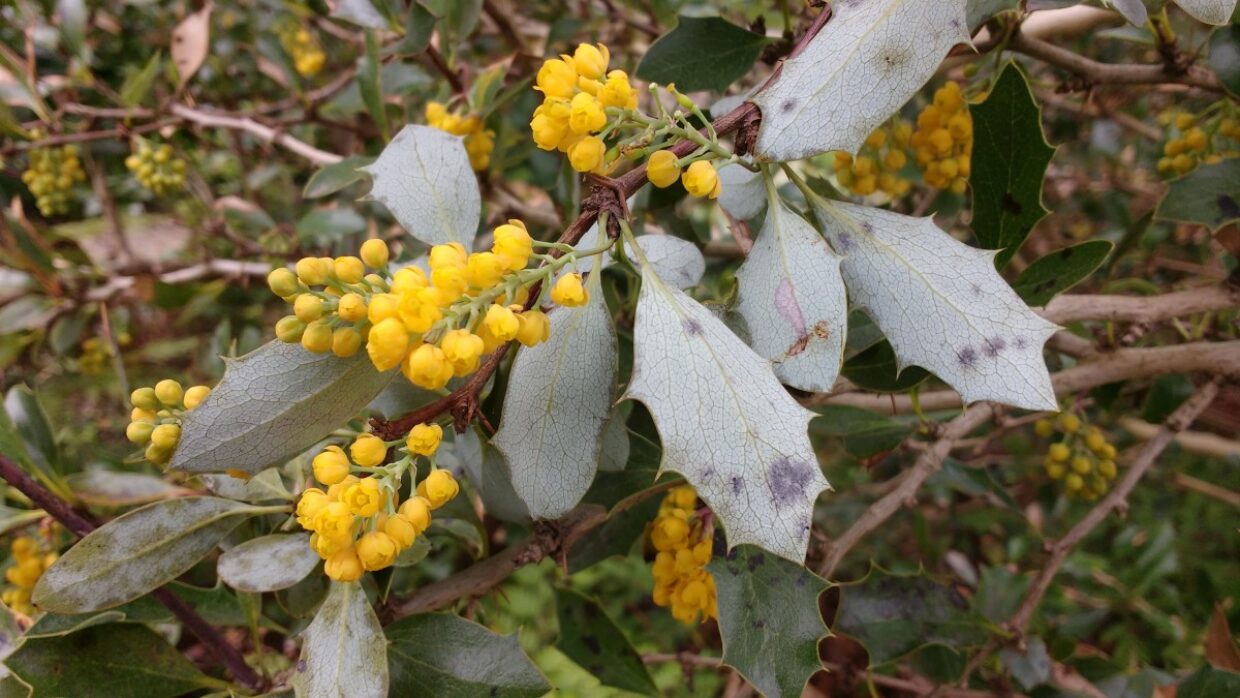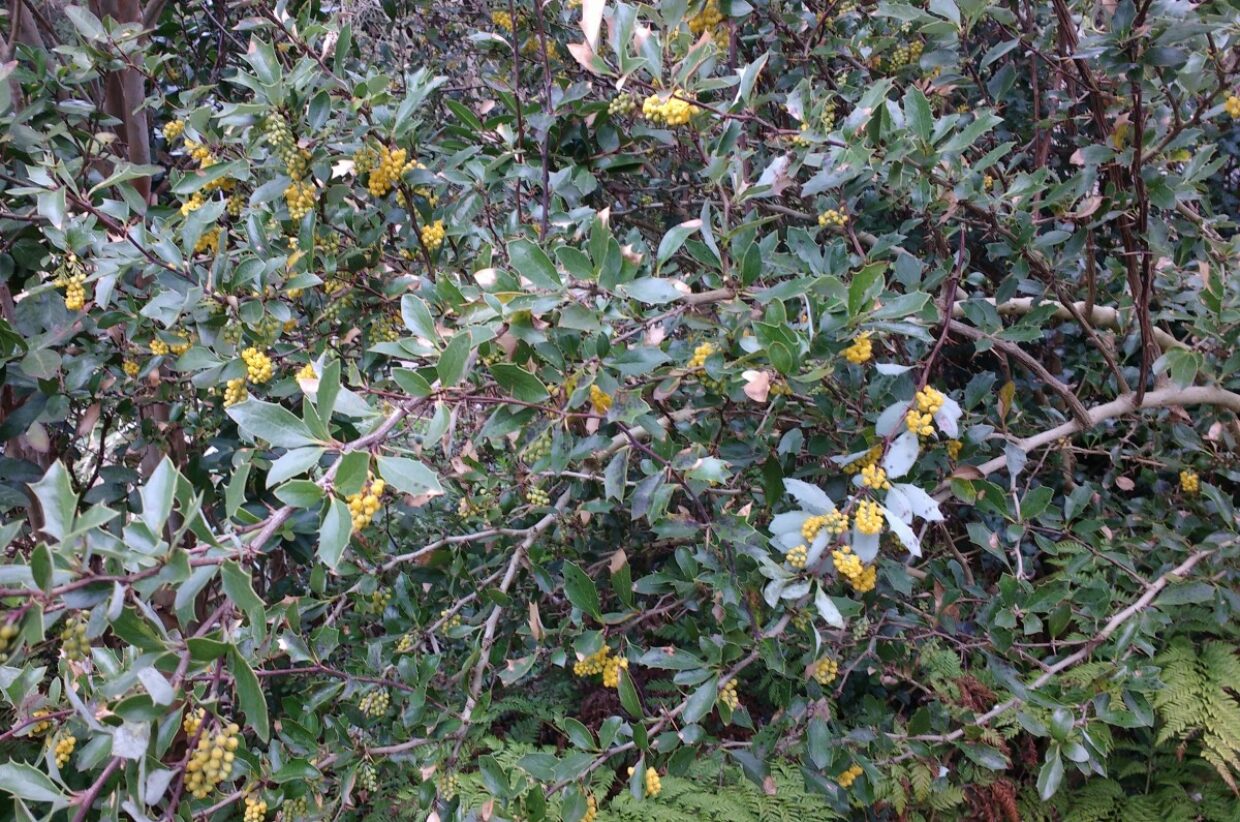Place of Publication
Fl. Chil. [Gay] 1.: 81 (1845)
Type citation
Valdivia, Gay s.n., 1839 [Lectotype, designated by Landrum 1999, P; isolectotypes: P, G]
Common names
References
-
Gay (1845)
Gay, C.
1845. Historia física y política de Chile: Botánica, vol. 1(1):1-104. Paris & Chile (Museo Historia Natural de Santiago)
-
Landrum (1999)
Landrum, L.R.
1999. Revision of Berberis (Berberidaceae) in Chile and Adjacent Southern Argentina. Annals of the Missouri Botanical Garden 84(4): 793-804
-
Marticorena & Rodríguez (2003)
Marticorena , C.
and
Rodríguez , R.
2003. Flora de Chile, Vol. 2(2) Berberidaceae-Betulaceae. Universidad de Concepción
Iconography
- Landrum (1999): Figs: 4F-H, 6C, 10B
Regions
Araucanía and
Los Ríos
Habitat
Mediterranean and
Mountain matorral & sclerophyllous forest
Distribution and habitat
Restricted to the Central Valley of Chile where it occurs from Province Cautín (Region Araucanía) to La Unión (Region Los Ríos). It grows in open areas that has now been converted to agricultural land and is often seen along fence lines (Landrum, 1999).
Distribution
-
Berberis congestiflora Gay
-
-
Berberis congestiflora Gay
-
-
Berberis congestiflora Gay
-
-
Berberis congestiflora Gay
-
-
Berberis congestiflora Gay
-
-
Berberis congestiflora Gay
-
-
Berberis congestiflora Gay
-
-
Berberis congestiflora Gay
-
-
Berberis congestiflora Gay
-
-
Berberis congestiflora Gay
-
-
Berberis congestiflora Gay
-
-
Berberis congestiflora Gay
-
-
Berberis congestiflora Gay
-
-
Berberis congestiflora Gay
-
-
Berberis congestiflora Gay
-
-
Berberis congestiflora Gay
-
Conservation status
Descriptions
Habit
Evergreen shrub to 3 m tall. Flowering mainly from October to December. Fruiting mainly in January (Landrum, 1999).
Key characteristics
Closely related to B. actinacantha from which it differs by having new leaves appearing on flowering branches (vs. non-flowering branches) with entire leaves distinctly white glaucous beneath (vs. toothed margins not glaucous beneath), up to 25 flowers per inflorescence, pedicles 2-4 mm long (vs. 14, pedicles 3-20 mm long) (Landrum, 1999).







